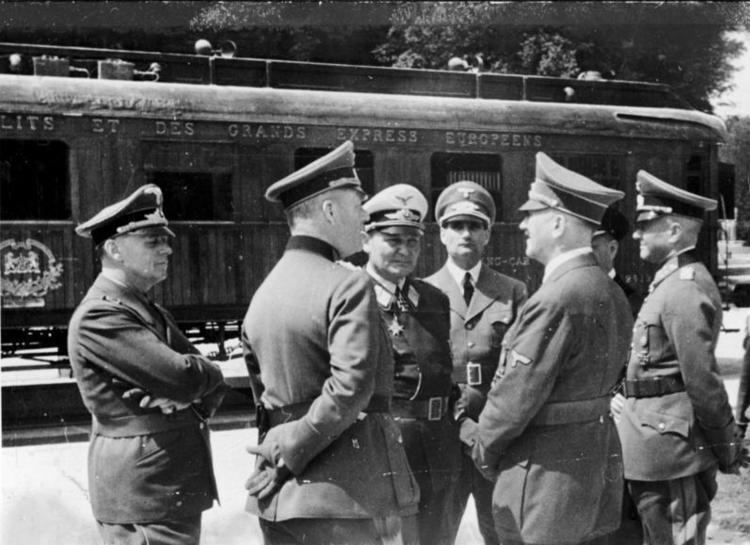 | ||
The Compiègne Wagon was the historical wagon in which the First and Second Armistice at Compiègne were signed.
After the first armistice was signed in the forest of Compiègne, the wagon was eventually moved to a protective place in a French museum. After the second armistice at Compiègne, the wagon was moved to Berlin to symbolize Germany's superiority over France.
In the last days of World War II, the SS blew up the wagon with dynamite.
History
The wagon was built in 1914 in Saint-Denis as a dining car and was used as such until August 1918. Then the passenger car was converted into an office for Marshal Ferdinand Foch, who used it from the end of October 1918 to September 1919.
On 11 November 1918, Foch, as Supreme Commander of the Western Front, signed the armistice with Germany in the then-called "Wagon of Compiègne". This agreement was the final "cease-fire" which ended fighting in the First World War; the other Central Powers having already reached agreements with the Allied Powers to end hostilities.
Sometime after this the car was returned to the Compagnie des Wagons-Lits and briefly resumed service as a dining car. In September 1919, it was donated to the Musée de l'Armée, in Paris. The wagon on display in the Cour des Invalides from 1921 to 1927.
At the request of the Mayor of Compiègne, and with the support of the American Arthur Henry Fleming the car was restored and returned to Compiègne. There it was housed in a specially created museum building as part of the "Glade of the Armistice" historic monument, built at the site of the signing ceremony.
During the Second World War, Hitler ordered that the wagon be returned to exactly the same location for the signing of the second "armistice at Compiègne", on 22 June 1940; this time with Germany victorious. The carriage was moved out of its protective building and returned to the signing-place, which was several metres away and had been marked out as part of the monument. Subsequently, the wagon was taken to Berlin and displayed a week later at the Berlin Cathedral. In 1944 the wagon was sent to Thuringia, in central Germany. Then it came to Ruhla and later Gotha Crawinkel, near a huge tunnel system. There it was destroyed in March 1945 by the SS with fire and/or dynamite, in the face of the advancing U.S. Army. However, some SS veterans claim that the wagon had been destroyed by air attack near Ohrdruf while still in Thuringia in 1944. Even so, it's generally believed the wagon was destroyed in 1945 by the SS.
